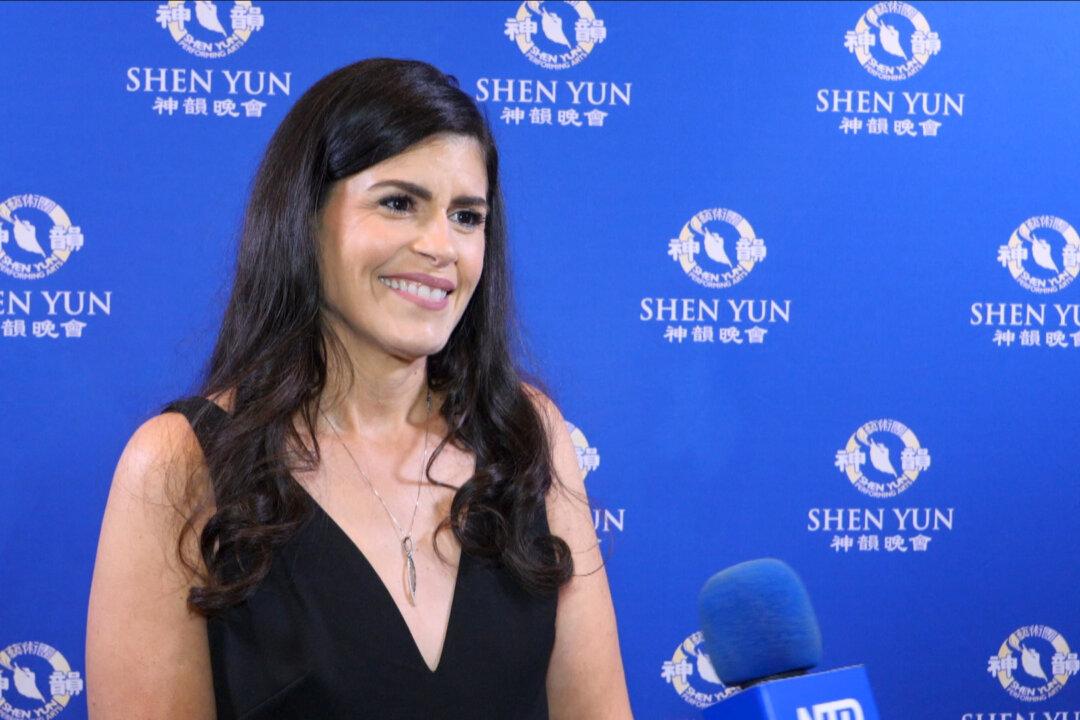NEW YORK—For Michael Aram, it was always fascinating to understand how things worked; his love for materials and his love for making things naturally led him to become an artist.
“We live in a very manufactured world where everything looks like it’s popped out of a machine,” said Aram.
Growing up in America, handicraft was very foreign for Aram. It wasn’t until he took a trip to India in 1988, to explore the legacy of an ancient civilization, that he really experienced handicrafts in a whole new way.
“My first trip to India was, for me, like walking into an Aladdin’s cave of craft,” he said. “Seeing living crafts was really astonishing.”
He can still recall the moment during his trip that changed his life: A man had a shop no wider than his shoulders, using a cutting die to make soles for shoes.
“He had hand-powered bellows, and he would take the hot steel out, forge it while it was still red hot, put it back into the balance, transfer it back over and over, and over again,” Aram said.
He was really impressed by his level of artisanship and his humility. Aram was immediately drawn to work alongside the craftsman.

Perfect Imperfections
His love for art drew him to organic form. The magical process of complementing the “perfectly imperfect aspect of nature” with the imperfections of the handmade process has always been a big part of his work.
“Each piece is its own work of art, you know, I can never make two pieces the same,” Aram said.
Each piece, carefully crafted, captures the personality of the creator.
“These are pieces that reflect our humanity and our life,” Aram added.
Aram often walks his kids to school, and sometimes they go to the beach and find little things that might be overlooked by others, or simply considered debris. But for Aram, they turn into pieces of inspiration.
One day, his son found a ripped and destroyed feather that had washed up on the beach and showed it to him.
“The feather was all ripped and destroyed, blown around and swept up on the beach and probably washed out and swept up again who knows how many times,” he said. “But I loved it because for me it evoked thoughts of what we go through in life.”
“In a way, it represented how we survive and become more beautiful and graceful because of what we go through in life,” Aram said.
“So I chose to really celebrate all the broken edges, all the twists, the turns, and the tears of the feather,” he added.
And that is what it shows—the boldness, the beauty, and the gracefulness of life.

From Deep Within
Aram opened his first store on 18th Street in midtown Manhattan 30 years ago. Since then, he has established a second home and studio in India. Today, Aram has more than 200 artisans working alongside him.The handcrafting process is often slow because it isn’t only about the skills, but the heart the creator puts into it.
He still remembers a public piece he was commissioned to make for the 100th anniversary of the Armenian genocide, four years ago.
It was a personal piece, an emotionally intense sculpture. Aram’s grandmother had survived the genocide and made her way to America. He decided to design a memorial showing the hundreds of thousands who had to leave their homes. The sculpture was an opportunity to honor his forefathers.
“But another craftsman saw that I had this sort of anguished look on my face,” Aram remembered. He gave Aram some advice that stuck with him, “We have to make sure that the piece has a positive message; that it has a beautiful message.”
Aram was touched and inspired by the craftsman’s sincerity and saw the piece for what it was really meant to be, hoping that one day the people could return to their homes. He ultimately named it “Migrations.”
“It’s something that reflects our own humanity,” he said.

“I always think, what do we do that has spirituality?” said Aram. “We live crazy lives, we’re all busy, we’re running businesses, we’re trying to be creative and trying to, you know, advance our work, and advance our careers and work hard. But what are the things that we take away at the end of our life?”




